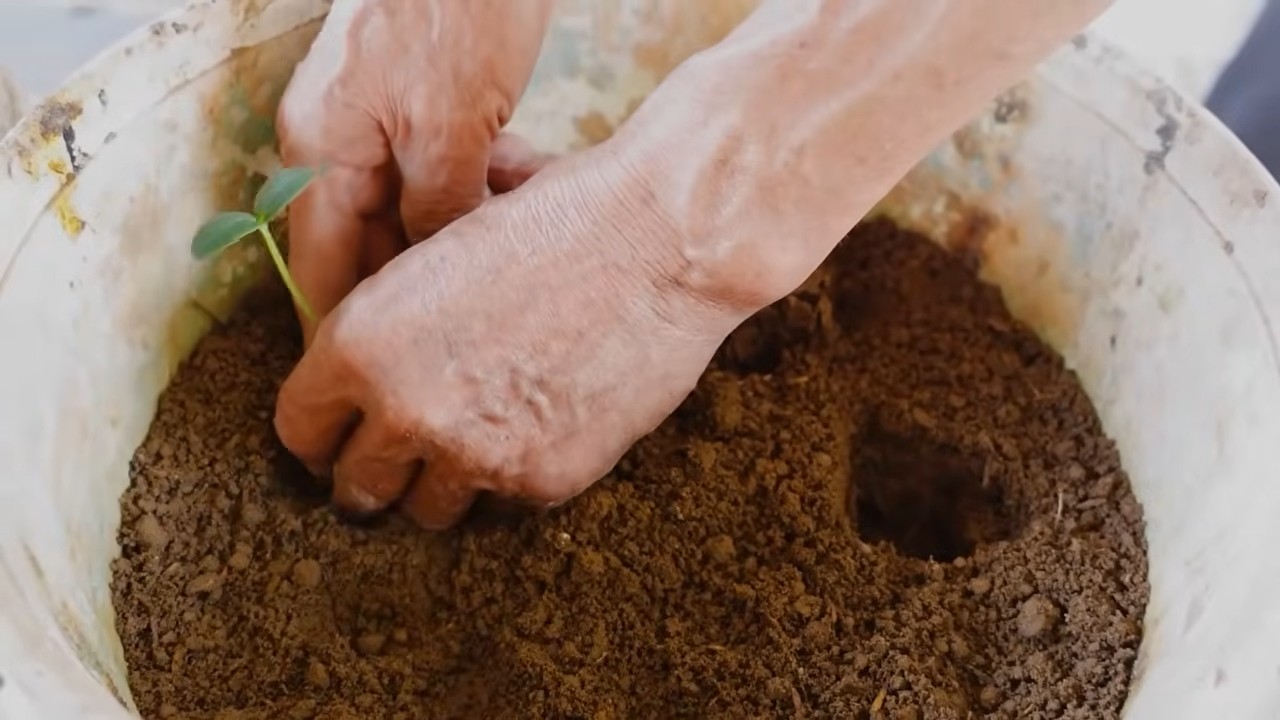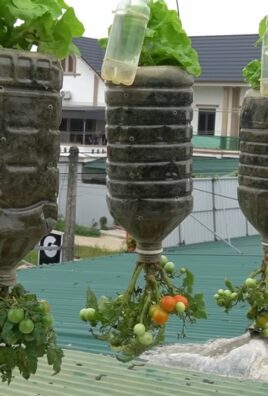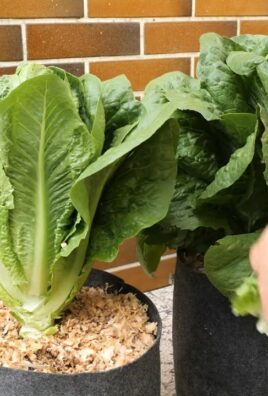Grow Better Cucumbers: Imagine biting into a crisp, refreshing cucumber, bursting with flavor, straight from your own backyard! Sounds idyllic, right? But let’s be honest, sometimes our cucumber dreams turn into bitter realities. We’ve all been there – stunted growth, yellowing leaves, and cucumbers that taste, well, less than delightful. But don’t despair, fellow gardeners! This isn’t just another gardening article; it’s your personal guide to unlocking the secrets of cucumber cultivation.
Cucumbers have a rich history, dating back thousands of years to their origins in India. They’ve been enjoyed by emperors and commoners alike, prized for their cooling properties and versatility. Today, growing your own cucumbers is more than just a hobby; it’s a way to connect with nature, reduce your carbon footprint, and enjoy the freshest, most flavorful produce imaginable.
But why do you need these DIY tricks and hacks? Because growing cucumbers successfully can be tricky! They’re susceptible to pests, diseases, and nutrient deficiencies. Plus, let’s face it, store-bought cucumbers often lack the vibrant taste and satisfying crunch of homegrown varieties. That’s where this article comes in. I’m going to share my tried-and-true methods, simple DIY solutions, and insider tips to help you grow better cucumbers than you ever thought possible. Get ready to transform your garden into a cucumber paradise!

Grow the Best Cucumbers Ever: My Foolproof DIY Guide
Hey there, fellow gardeners! I’m so excited to share my tried-and-true method for growing ridiculously delicious and abundant cucumbers. Forget those wimpy, bitter cucumbers you sometimes get from the store. With a few simple DIY hacks, you’ll be harvesting a bumper crop of crisp, flavorful cukes all season long. Let’s dive in!
Choosing the Right Cucumber Variety
Before we get our hands dirty, let’s talk about cucumber varieties. This is crucial because different types are suited for different purposes and growing conditions.
* Slicing Cucumbers: These are your classic cucumbers, perfect for salads and sandwiches. They usually have smooth, dark green skin. Some popular varieties include ‘Marketmore 76’, ‘Straight Eight’, and ‘Burpless Hybrid’.
* Pickling Cucumbers: These are shorter and stubbier, with bumpy skin. They’re specifically bred for pickling and hold their texture well in brine. ‘National Pickling’ and ‘Boston Pickling’ are excellent choices.
* Bush Cucumbers: If you’re short on space, bush cucumbers are your best bet. They grow in a compact form, making them ideal for containers. ‘Spacemaster’ and ‘Bush Champion’ are great options.
* Specialty Cucumbers: Don’t be afraid to experiment! There are many unique cucumber varieties, like lemon cucumbers (round and yellow) and Armenian cucumbers (long and slender).
My personal favorite? I love growing ‘Burpless Hybrid’ for slicing and ‘National Pickling’ for, well, pickling! They’re reliable and always produce fantastic results.
Preparing the Soil: The Foundation for Success
Cucumbers are heavy feeders, meaning they need nutrient-rich soil to thrive. Here’s how I prepare my cucumber beds:
* Sunlight: Cucumbers need at least 6-8 hours of direct sunlight per day. Choose a location that gets plenty of sun.
* Soil Type: Cucumbers prefer well-drained soil that’s rich in organic matter.
* Soil Testing: Ideally, test your soil to determine its pH and nutrient levels. Cucumbers prefer a slightly acidic to neutral pH (6.0-7.0).
* Amending the Soil: This is where the magic happens! I like to amend my soil with the following:
* Compost: Add a generous amount of compost to improve soil structure, drainage, and fertility.
* Aged Manure: Aged manure is another excellent source of nutrients. Be sure it’s well-aged to avoid burning the plants.
* Bone Meal: Bone meal provides phosphorus, which is essential for root development.
* All-Purpose Organic Fertilizer: I also like to add a balanced organic fertilizer to give my cucumbers an extra boost.
Important Tip: Work the amendments into the soil to a depth of at least 12 inches. This will create a loose, fertile bed for your cucumber roots to grow.
DIY Cucumber Trellis: Vertical Gardening at Its Finest
Cucumbers are natural climbers, and training them on a trellis offers several benefits:
* Improved Air Circulation: Trellising allows for better air circulation, which helps prevent fungal diseases.
* Increased Sunlight Exposure: The leaves get more sunlight, leading to better photosynthesis and higher yields.
* Easier Harvesting: It’s much easier to harvest cucumbers when they’re hanging from a trellis.
* Space Saving: Trellising saves space in the garden, especially if you’re growing bush varieties.
Here’s how I build my simple and effective DIY cucumber trellis:
Materials You’ll Need:
* Wooden Stakes or Bamboo Poles: I use four stakes, about 6 feet long.
* Heavy-Duty Twine or Garden Wire: Choose a material that’s strong enough to support the weight of the cucumbers.
* Measuring Tape
* Scissors or Wire Cutters
Step-by-Step Instructions:
1. Position the Stakes: Drive the stakes into the ground, forming a square or rectangle. The size of the square will depend on the number of cucumber plants you’re growing. I usually space my stakes about 2-3 feet apart.
2. Create Horizontal Supports: Tie twine or wire horizontally between the stakes, starting about 6 inches from the ground. Space the horizontal supports about 6-8 inches apart.
3. Create Vertical Supports: Tie twine or wire vertically between the horizontal supports, creating a grid pattern. This will give the cucumber tendrils something to grab onto.
4. Secure the Trellis: Make sure the trellis is sturdy and won’t topple over when the cucumbers start to grow. You can add extra stakes or tie the trellis to a fence or wall for added support.
Alternative Trellis Ideas:
* A-Frame Trellis: Two pieces of lattice or wire mesh hinged together at the top.
* Cattle Panel Trellis: A section of cattle panel bent into an arch.
* Repurposed Ladder: An old ladder leaned against a wall or fence.
Planting Your Cucumber Seeds or Seedlings
Now for the fun part – planting! You can either start cucumber seeds indoors or direct sow them in the garden.
* Starting Seeds Indoors: Start seeds indoors about 3-4 weeks before the last expected frost. Use biodegradable pots to avoid disturbing the roots when transplanting.
* Direct Sowing: Sow seeds directly in the garden after the last frost, when the soil has warmed up to at least 60°F (15°C).
Planting Instructions:
1. Prepare the Planting Holes: Dig holes about 1 inch deep and space them about 12-18 inches apart.
2. Sow the Seeds: Place 2-3 seeds in each hole.
3. Cover the Seeds: Cover the seeds with soil and gently water.
4. Thin the Seedlings: Once the seedlings emerge, thin them to one plant per hole. Choose the strongest and healthiest seedling.
5. Transplant Seedlings (if applicable): If you started seeds indoors, harden them off for a week before transplanting them into the garden. Dig a hole slightly larger than the root ball and gently place the seedling in the hole. Backfill with soil and water thoroughly.
My Secret Weapon: I like to add a pinch of mycorrhizal fungi to the planting hole. These beneficial fungi help the cucumber roots absorb nutrients and water more efficiently.
Watering and Fertilizing: Keeping Your Cucumbers Happy
Cucumbers need consistent watering and regular fertilization to produce a bountiful harvest.
* Watering: Water deeply and regularly, especially during hot, dry weather. Aim for about 1 inch of water per week.
* Mulching: Apply a layer of mulch around the cucumber plants to help retain moisture, suppress weeds, and regulate soil temperature. I use straw or shredded leaves.
* Fertilizing: Fertilize every 2-3 weeks with a balanced organic fertilizer. You can also use a liquid seaweed fertilizer for an extra boost.
Watering Tip: Water at the base of the plants to avoid wetting the foliage, which can lead to fungal diseases.
Pest and Disease Control: Protecting Your Precious Cucumbers
Cucumbers are susceptible to a few common pests and diseases. Here’s how I keep them at bay:
* Cucumber Beetles: These pesky beetles can damage leaves and spread diseases. Handpick them off the plants or use row covers to protect the seedlings.
* Squash Bugs: Squash bugs can also damage cucumber plants. Handpick them off the plants or use insecticidal soap.
* Powdery Mildew: This fungal disease causes a white, powdery coating on the leaves. Improve air circulation, water at the base of the plants, and use a fungicide if necessary.
* Downy Mildew: This fungal disease causes yellow spots on the leaves. Improve air circulation, water at the base of the plants, and use a fungicide if necessary.
My Natural Pest Control Solution: I make a homemade insecticidal soap by mixing 1 tablespoon of liquid dish soap with 1 quart of water. I spray this solution on the plants to control aphids, whiteflies, and other soft-bodied insects.
Harvesting Your Cucumbers: The Sweet Reward
Harvesting cucumbers at the right time is crucial for optimal flavor and texture.
* Harvest Time: Harvest cucumbers when they’re young and tender, before the seeds become too large. The size of the cucumber will depend on the variety.
* Harvesting Technique: Use a sharp knife or pruners to cut the cucumber from the vine. Be careful not to damage the plant.
* Regular Harvesting: Harvest cucumbers regularly to encourage the plant to produce more fruit.
Harvesting Tip: The more

Conclusion
So, there you have it! Growing better cucumbers doesn’t have to be a mystery or a struggle. By implementing this simple yet effective DIY trick – the trellis system – you’re setting yourself up for a bountiful harvest and healthier plants. Forget about cucumbers rotting on the ground, succumbing to pests, or becoming misshapen. This method elevates your cucumbers, literally and figuratively, allowing them to thrive in a cleaner, more efficient environment.
But why is this DIY trick a must-try? It’s simple: it maximizes space, improves air circulation, reduces disease, and makes harvesting a breeze. Imagine walking through your garden and easily spotting those plump, juicy cucumbers hanging gracefully from the trellis, ready to be picked. No more searching through tangled vines or bending over awkwardly. The ease and efficiency alone make it worth the effort.
Beyond the basic trellis, there are numerous ways to customize this technique to suit your specific needs and preferences. Consider using different materials for your trellis – bamboo poles for a rustic look, sturdy metal for long-lasting durability, or even repurposed materials like old ladders or fencing. You can also experiment with different trellis designs, such as A-frames, teepees, or vertical netting, depending on the space you have available and the type of cucumber you’re growing. Bush varieties might benefit from a smaller, more compact support system, while vining varieties will need a taller, more robust structure.
For those looking to take their cucumber growing to the next level, consider companion planting. Planting basil or marigolds near your cucumbers can help deter pests and attract beneficial insects. Additionally, regular watering and fertilization are crucial for healthy growth and abundant fruit production. Remember to water deeply and consistently, especially during hot, dry weather. A balanced fertilizer, applied according to package directions, will provide your cucumbers with the nutrients they need to flourish.
Don’t be afraid to experiment and adapt this DIY trick to your own garden. Every garden is unique, and what works for one person may not work for another. The key is to observe your plants, learn from your experiences, and make adjustments as needed. The joy of gardening lies in the process of discovery and the satisfaction of nurturing your own food.
We wholeheartedly encourage you to try this DIY trick for growing better cucumbers. The benefits are undeniable, and the results will speak for themselves. Once you’ve experienced the ease and abundance of growing cucumbers on a trellis, you’ll never go back to the old way.
And most importantly, we want to hear about your experience! Share your photos, tips, and stories with us in the comments below. Let us know what worked for you, what challenges you faced, and any variations you tried. Together, we can learn from each other and create a community of successful cucumber growers. So, get out there, build your trellis, and start growing those delicious cucumbers! Happy gardening!
Frequently Asked Questions (FAQ)
What type of trellis is best for growing cucumbers?
The “best” type of trellis depends on several factors, including the variety of cucumber you’re growing, the amount of space you have, and your personal preferences. Vining cucumbers, such as slicing and pickling varieties, require a taller and sturdier trellis, as they can grow quite long and heavy. A-frame trellises, teepees, and vertical netting are all excellent options for these types of cucumbers. Bush cucumbers, on the other hand, are more compact and can be supported by smaller, less elaborate trellises, such as tomato cages or small wire supports. Consider the mature size of your cucumber plants when choosing a trellis to ensure it can adequately support their growth.
How tall should my cucumber trellis be?
The ideal height for your cucumber trellis will depend on the variety of cucumber you are growing. For vining varieties, aim for a trellis that is at least 6-8 feet tall. This will provide ample space for the vines to climb and spread out. Bush varieties, which are more compact, can be supported by a trellis that is 3-4 feet tall. It’s always better to err on the side of caution and build a trellis that is slightly taller than you think you’ll need, as cucumbers can be surprisingly vigorous growers.
What materials can I use to build a cucumber trellis?
You can use a variety of materials to build a cucumber trellis, depending on your budget, skill level, and aesthetic preferences. Some popular options include:
* **Bamboo:** Bamboo poles are a natural and sustainable option that adds a rustic touch to your garden. They are relatively inexpensive and easy to work with.
* **Wood:** Wooden trellises are sturdy and durable, and can be customized to fit your specific needs. You can use lumber, branches, or even repurposed wood to build your trellis.
* **Metal:** Metal trellises are the most durable option and can last for many years. They are also resistant to rot and pests. You can use metal pipes, rebar, or wire mesh to build your trellis.
* **Netting:** Netting is a lightweight and inexpensive option that is easy to install. It is ideal for supporting vining cucumbers and can be attached to a frame made of wood or metal.
* **Repurposed Materials:** Get creative and repurpose old materials like ladders, fencing, or even bed frames to build your cucumber trellis. This is a great way to save money and reduce waste.
How do I train my cucumber vines to climb the trellis?
As your cucumber vines grow, you will need to train them to climb the trellis. This can be done by gently guiding the vines towards the trellis and securing them with plant ties or twine. You can also use clips or Velcro straps to attach the vines to the trellis. Be sure to check your plants regularly and adjust the ties as needed to ensure the vines are properly supported. Avoid tying the vines too tightly, as this can restrict their growth.
How often should I water my cucumbers growing on a trellis?
Cucumbers growing on a trellis need consistent watering, especially during hot, dry weather. Water deeply and regularly, aiming to keep the soil consistently moist but not waterlogged. The frequency of watering will depend on the weather conditions and the type of soil you have. In general, you should water your cucumbers every 2-3 days, or more often if the soil dries out quickly. Check the soil moisture by sticking your finger into the soil about an inch deep. If the soil feels dry, it’s time to water.
What are some common pests and diseases that affect cucumbers, and how can I prevent them?
Cucumbers are susceptible to a variety of pests and diseases, including aphids, cucumber beetles, squash bugs, powdery mildew, and downy mildew. To prevent these problems, follow these tips:
* **Choose disease-resistant varieties:** When selecting cucumber seeds or seedlings, look for varieties that are resistant to common diseases.
* **Practice crop rotation:** Avoid planting cucumbers in the same location year after year, as this can build up pests and diseases in the soil.
* **Provide good air circulation:** Space your cucumber plants properly and prune them regularly to improve air circulation and reduce humidity, which can help prevent fungal diseases.
* **Water properly:** Avoid overhead watering, as this can create a humid environment that is conducive to fungal diseases. Water at the base of the plants instead.
* **Monitor your plants regularly:** Check your cucumber plants regularly for signs of pests or diseases. If you catch problems early, you can often treat them with organic methods, such as insecticidal soap or neem oil.
* **Companion planting:** Plant basil or marigolds near your cucumbers to help deter pests and attract beneficial insects.
Can I grow cucumbers in containers on a trellis?
Yes, you can absolutely grow cucumbers in containers on a trellis. Choose a large container that is at least 12 inches in diameter and 12 inches deep. Fill the container with a well-draining potting mix. Select a bush variety of cucumber, as these are more compact and better suited for container growing. Provide a small trellis or support system for the vines to climb. Water regularly and fertilize every 2-3 weeks with a balanced fertilizer. Place the container in a sunny location that receives at least 6-8 hours of sunlight per day.
How do I know when my cucumbers are ready to harvest?
Cucumbers are typically ready to harvest when they are firm, green, and have reached the desired size for their variety. Check the seed packet or plant tag for specific information on the expected size and maturity time for your cucumbers. Avoid letting the cucumbers get too large, as they can become bitter and seedy. Harvest cucumbers regularly to encourage continued production. Use a sharp knife or pruners to cut the cucumbers from the vine, leaving a small stem attached.





Leave a Comment